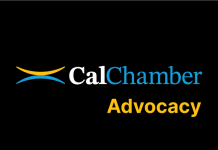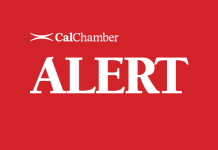![]() Governor Newsom announced his strategy to address an estimated $27.6 billion deficit for the upcoming budget year, and a $28.4 billion projected deficit for 2025–26.
Governor Newsom announced his strategy to address an estimated $27.6 billion deficit for the upcoming budget year, and a $28.4 billion projected deficit for 2025–26.
The Administration normally updates its revenue estimates and spending plan in May to reflect final income tax payments and new economic data. One of the reasons for the large budget deficit was the lack of access to this data last year because federal and state income tax deadlines were postponed to accommodate taxpayers affected by natural disasters.
The Governor’s strategy comprises a mix of spending reductions and delays, the elimination of frequently used tax credits, fund shifts and dipping into rainy day reserves. Recognizing the multi-year dimension of the budget shortfalls, he tagged many of his proposed revenue increases and spending reductions to solve for two or more years of anticipated budget deficits.
The Governor’s major proposed solutions to eliminate budget deficits include:
- Withdrawing about $13.1 billion from various budget reserve accounts, and another $8.4 billion from the public schools reserve account.
- Potentially increasing revenues by $5.5 billion by suspending Net Operating Losses (NOL) deductions and limiting tax credits that businesses currently rely upon to manage costs. The change would affect tax years 2025, 2026 and 2027, unless revenues are sufficient without the suspension.
- Tens of billions in additional program reductions and delays, such as cutting $510 million for the middle class scholarship program, $500 million for preschool and kindergarten facilities, $80 billion from correctional facilities by closing housing units, reducing health care workforce programs by $846 million over the next five years, and delaying child care program expansions, totaling $1.3 billion over two years, and $60 million from the extension of the California Competes grant program for next year.
- An across-the-board reduction in state operations of about eight percent, affecting nearly all departments.
- Shifting billions in General Fund obligations to special funds.
Proposed Suspension of Important NOL Tax Credit
The Governor resisted proposing general tax increases to address the multi-year budget shortfalls, but resurrected a temporary, targeted tax strategy affecting businesses. Similar to a proposal adopted by the Legislature for the pandemic-stricken budget in 2020, the Governor has proposed suspending the carryover of net operating loss tax deductions for businesses with California income greater than $1 million, and limiting business credit usage to $5 million in tax years 2025, 2026 and 2027.
A “trigger” would be included to restore these tax strategies if sufficient revenues are available next year. The carryover periods for NOLs and credits would be extended by three years, and the credit limitation would not apply to the Low-Income Housing and Pass-through Entity Elective tax credits.
After these tax incentive suspensions were enacted in 2020, the anticipated budget shortfalls did not materialize. As a result, the Legislature and Governor terminated the suspensions one year early.
Addressing Revenue Volatility
Buoyed by the success of the Rainy Day Reserve, approved by voters as Proposition 2 in 2012, the Governor will be proposing amendments to allow even more excess revenues be added to the reserve during years with windfall capital gains tax revenues, which are notoriously volatile. Receipts from capital gains taxes that soared to $349 billion in 2021–22 dropped to $137 billion in 2023–24. This would both provide a cushion for state spending when revenues decline, and prevent the Legislature from spending those excess revenues in the first place.
What’s Next?
The next move is the Legislature’s, which will negotiate an overall compromise to meet the June 15 deadline to approve a budget. The Governor must give his final approval before July 1, the beginning of the fiscal year. Further action on many of these budget items will doubtlessly transpire throughout the summer.


